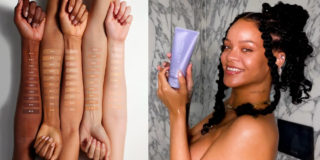People who are commonly classed as minorities now make up the majority of consumers in some parts of the UK.
England and Wales, for example, are no longer majority Christian countries. Leicester and Birmingham are the first towns in the UK to have “minority majorities”. People who say they are white British are now the minority in both London and Birmingham as well.
However, it is not only diversification in religion, ethnicity, and race that is altering the consumer landscape in the UK, but also changes in social class, gender, and sexuality.
For example, around 1.5 million people identify themselves as gay, lesbian or bisexual in England and Wales.
Brands should take note
This trend of minorities becoming majorities will continue to grow, and as always, brands have the chance to create consensus with these communities about what they stand for, and ultimately build affinity, salience, and loyalty.
Now consider in 2023, the disposable income of people from minority ethnic groups in the UK is projected to be over £250 billion annually, projected to reach £3 trillion by 2031 and £17 trillion by 2061.
The simple solution? Visually inclusive advertising
Unsurprisingly, more and more brands are including minorities in their advertisements or making them the main characters in their communications.
And while including more diverse people in advertising can make a brand seem more forward-thinking, a recent study we conducted shows that just putting actors from other minority groups in brand communications can hurt more than help.
This is especially true now that inclusive marketing is becoming the norm (and, for us, a requirement for every client brief).
Three top considerations for effective inclusive marketing
We recently collaborated in running one of the largest diversity studies in the UK where we quickly confirmed the obvious—there is no silver bullet for inclusive marketing. However, there are some new and old lessons that brands can use to make inclusive marketing more effective.
Here are three things to consider when planning your next campaign or evaluating the creative work proposed by a creative agency.
1. Representation can help drive the appeal, but overrepresentation can be seen as insulting
It’s important to consider whether including minorities in your communications is actually reinforcing any negative stereotypes. It’s also possible to lose the balance of equally and fairly representing consumers who might use or find your product relevant.
For example, your brand may be the least expensive product in your category. A no-no would be to start suddenly leading your communications with people from minority groups, as this could reinforce the stereotype of them being less affluent.
Google’s Hands Raised campaign is a great point of reference for brands wanting to create inclusive communication while also masterfully sidestepping overrepresentation.
2. Visual and verbal inclusivity can please, but it should match actions
This is probably not new news, but consumers are savvy. They can easily tell if you are truly inclusive or just talking the talk but not walking the walk. So, you should consider if what your brand says matches what it does or intends to do in the near future.
For example, your external communications brand preaches the importance of inclusivity, but your company is not and does not intend to be diverse internally.
IBM’s Be Equal and their ongoing initiatives in the DEI space is a great point of reference.

3. Inclusive promotion helps, but you shouldn’t forget the other 4 Ps of marketing
Not all products are fully suitable for or easy to get for people from minority groups. So, before running an inclusive campaign, ensure whether your targeted minority community has any deeply rooted cultural norms, hierarchies, preferences, or financial challenges that will require you to improve or completely reimagine your product.
For example, if you run a beauty brand that does not provide products for people with darker skin tones, running communications to promote otherwise would be a bad idea.
Fenty Beauty by Rihanna is a great example of a brand that found the right balance between all 4Ps of inclusive marketing.
Not as easy as it looks
Inclusive marketing may appear simple, but it can be difficult to implement effectively due to the different cultural nuances and norms of minority groups.
However, while these three lessons are not silver bullets, they can help you maximise your chances of connecting with minority groups for now and in the future.





